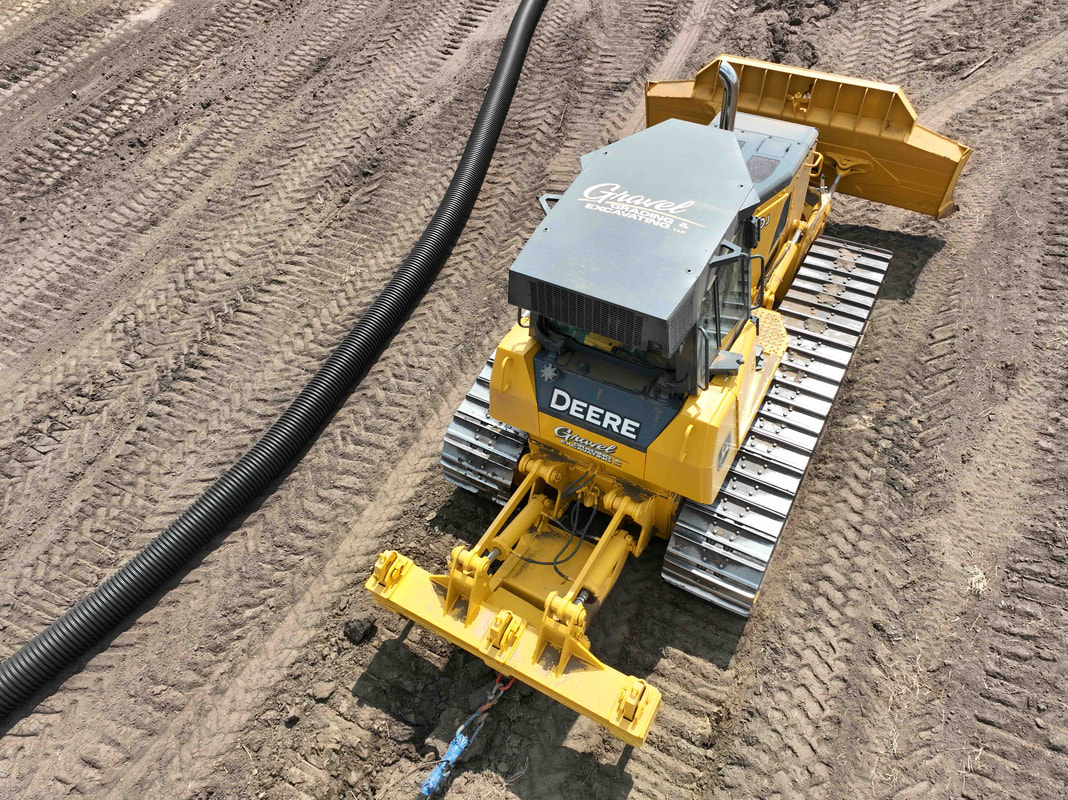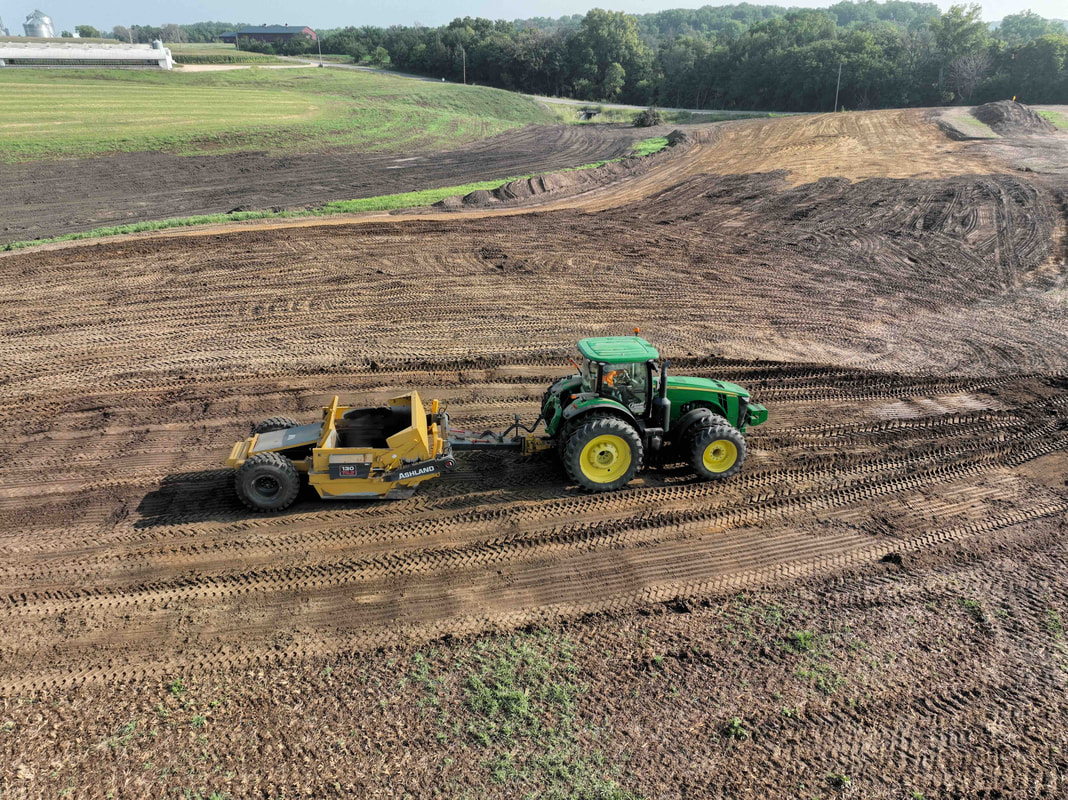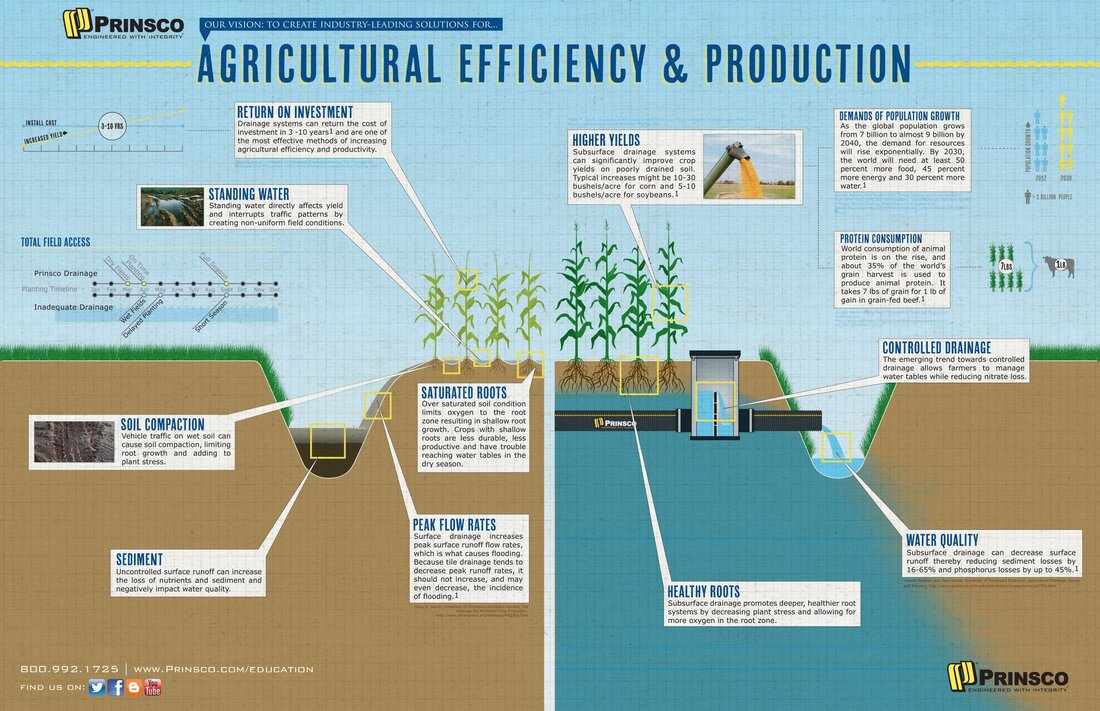|
When considering whether drainage tile is right for your situation, there are many factors to consider including future crops that will be planted in the area and their water needs, the current topography and natural drainage of your field, and the type of soil in the field. Sandier soil contents will require little drainage tile, as the soil cannot retain moisture, while soils with high clay content will need more tile lines placed closer together, as this soil holds water tighter.
Before installation, it is also advised that you check with your local agencies to ensure your plans are in line with county, state, and federal code. Some drainage activities require permits, while others are simply reviewed and either approved or denied. While tiling can seem like a significant undertaking, there are several benefits for Eastern Iowa farmers including improved crop quality and production, reduced soil evaporation, well-aerated root systems, enhanced productivity, and prevention of harmful salt buildup. Thank you to all our farm clients over the years; we appreciate your business and support. If tiling is something you need in 2024, contact the crew at Gravel Grading and Excavating to get on our schedule. We are happy to move the earth for all our local farmers and help you achieve optimal yields for your crops!
0 Comments
Valentine's Day...the annual day where we men get to express our love without shame, has recently come and gone, but we thought this week would be a good opportunity to remind our followers why we at Gravel Grading & Excavating aren't just tough, good-looking guys. We love a lot of things. 1. We love to help people. In our line of work, we are lucky to help people build their dreams. Whether we get called in to help dig the foundation for a family's new home, install ag tile for a farmer making the best use of his field, or dig a new pond for some fishing and relaxation, we take great pride knowing that the work we do helps our customers. 2. We love to drive big machines. Remember how much fun it was to play in the sandbox as a kid? Especially with those toys you could sit on and use the hand levers to scoop and move the sand? Yeah. We get to do that every day. At work. Now the sandbox toys are bigger, and they have engines and names like John Deere, Caterpillar, and Bobcat on the side. 3. We love to play in the dirt. Much like #2, our favorite things to do as kids have become our jobs. There's nothing like the satisfaction of building something new or solving an engineering problem. It's a humbling experience to use our experience and skills to reroute waterways or reshape the landscape, and it never gets old. 4. We love our local communities. Oftentimes our crew gets called in to help on public works projects, and we enjoy helping our towns infrastructure function better. In the last year we've helped create new parking lots for our local schools, prep sidewalks to keep our citizens safe, and work below the surface to keep water and sewer services functioning. The guys on our crew volunteer at local events and fundraisers and serve the community as members of organizations. Our homes and communities are important to us, and we're thankful to serve them. 5. We love to help people. In our line of work, we are lucky to help people build their dreams...oops. We already said that. But really, it's the best part of our job. Thanks so much to our customers, family members, friends, and followers. We are grateful for your business in the past, and we look forward to even more projects in 2018. For many local farmers, having a creek run through their property is an advantage. Creeks can provide access to water for pasture livestock, a boundary between fields, or recreation for the family. Sometimes, creeks can be a source of headache for farmers, as was the case with this project at the Takes farm located east of Cascade, Iowa, on Bellevue-Cascade Road. Each day when it was time for chores, local farmer John Takes would fill his feed wagon and cross the county highway into his cattle pasture. Once inside the fence, John would have to maneuver his tractor and wagon down and then back up the steep sides of the small creek to access his herd. On its best days this caused his equipment to bottom-out, creating a dirty mess that was hard on his machinery, and on the worst days in times of high water, the pasture was nearly inaccessible. To remedy this problem, John called Terry and Gravel Grading and Excavating to help him devise a solution. Terry recommended installing a new creek crossing, complete with prefabricated slatted concrete slabs to aid in traction for equipment and three ag-tile culverts that would allow the creek to maintain its flow below the new structure without compromising its stability. To begin, the crew of Gravel Grading & Excavating waited for a dry spell, so the creek would be low enough to work around. Then drawing on their extensive experience and laser grading equipment, they determined the optimal location of the path across the creek, as well as the appropriate height for the new crossing so as high water events would not breach the new lane. The guys then moved in with graders, skid steers, and excavators, to begin the process of moving dirt to prepare for the installation of the culverts. A bed was prepared for the pipes to lay upon, and once again the laser levels were used to determine the proper degree of slope for maximum water drainage. Once this was prepared, the plastic piping could be installed and backfilled with dirt and rock for stabilization. An extra measure was taken for erosion control by pouring concrete walls on each side of the new road to prevent washouts in heavy rain events. The crew then went about pouring a final layer of concrete to top off the new crossing, placing concrete slats on both sides, and regrading and dumping new gravel along the newly-established path for the finishing touches. Shortly after the conclusion of the creek crossing, a storm passed through, testing the effectiveness of Gravel Grading & Excavating's work. As expected the crew was able to move the earth for our customer John, and the culverts worked just as planned, allowing the creek to maintain its flow through the pasture while allowing John to access and feed his cattle. Thank you to the Takes family for choosing Gravel Grading and Excavating for this project, and be sure to give us a call for any of your dirt work needs. |
hereYou'll find all the newest products and services recommended by Terry and Gravel Grading & Excavating. Categories
All
Archives
April 2024
|




 RSS Feed
RSS Feed
